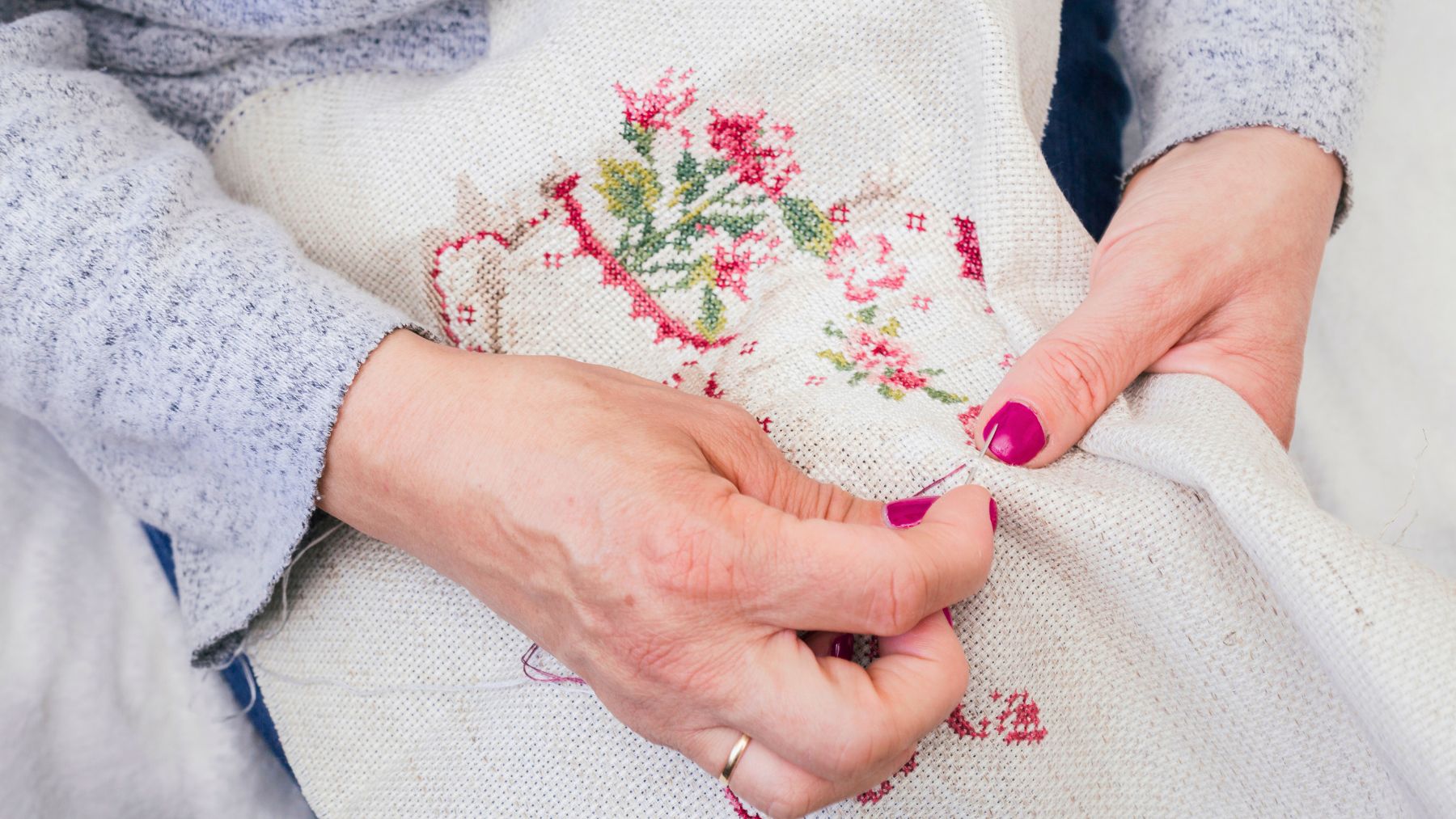Staying mentally active during your retirement years is just as important as keeping the body moving. Hobbies that engage the hands and the mind can provide stimulation while also offering relaxation. One activity, in particular, is once again becoming popular among older adults for this purpose: cross-stitch.
In the sections ahead, we’ll look at what cross stitch is, how it works, and why it’s perfect for women over 65. We’ll also share practical tips on how to get started, from choosing materials to finishing your first project, so you can enjoy both its creative and cognitive rewards.
Cross-stitch and its benefits for senior ladies
Cross stitch is a form of embroidery that has been practiced for centuries. It involves making small x-shaped stitches on fabric, usually following a printed or counted pattern. Traditionally, it was used to decorate clothing and household items, but today it’s embraced as a creative pastime that combines art, precision, and patience.
For women over 65, this can be more than a relaxing hobby. The repetitive motions and focus required can reduce stress and bring a sense of calm. Because each design demands counting and careful attention, it also helps strengthen concentration and memory. Following a pattern encourages logical thinking and planning, both of which support your brain health.
Besides, it encourages fine motor skills and hand-eye coordination, which can be especially helpful as dexterity naturally changes with age. Emotionally, completing a project provides a sense of accomplishment and boosts self-confidence, and joining a group or club dedicated to embroidery can make it a social activity, giving you a chance to connect with others who share the same interest.
Tips to start with cross-stitch with confidence
Beginning a cross-stitch project does not require advanced skills, but having the right tools and a clear plan can make the experience much easier. Here are a few practical steps to get started:
- Choose the right fabric. Beginners often find “aida cloth” easiest to work with, as its clear squares guide each stitch.
- Pick the proper needle. A blunt tapestry needle, usually size 24 or 26, is recommended for starting out.
- Use embroidery floss. This thread comes in many colors and is divided into strands. Most patterns will tell you how many to use.
- Consider a basic kit. You can find starter kits online or at craft stores that include everything you need, like the fabric, needle, thread, and printed instructions.
- Keep good lighting. Working in a bright space reduces eye strain and makes it easier to follow the design.
- Work with a hoop. An embroidery hoop keeps fabric taut and helps maintain even stitches.
- Start small. A small design, such as a bookmark or coaster, is less overwhelming and lets you practice before moving on to larger projects.
Cross-stitch provides time for reflection, mental exercise, and creative satisfaction. For women over 65, it can become a hobby that strengthens memory, sharpens attention, and creates lasting works of art. With a few materials and some patience, this traditional craft can open the door to hours of enjoyment and many cognitive benefits.
